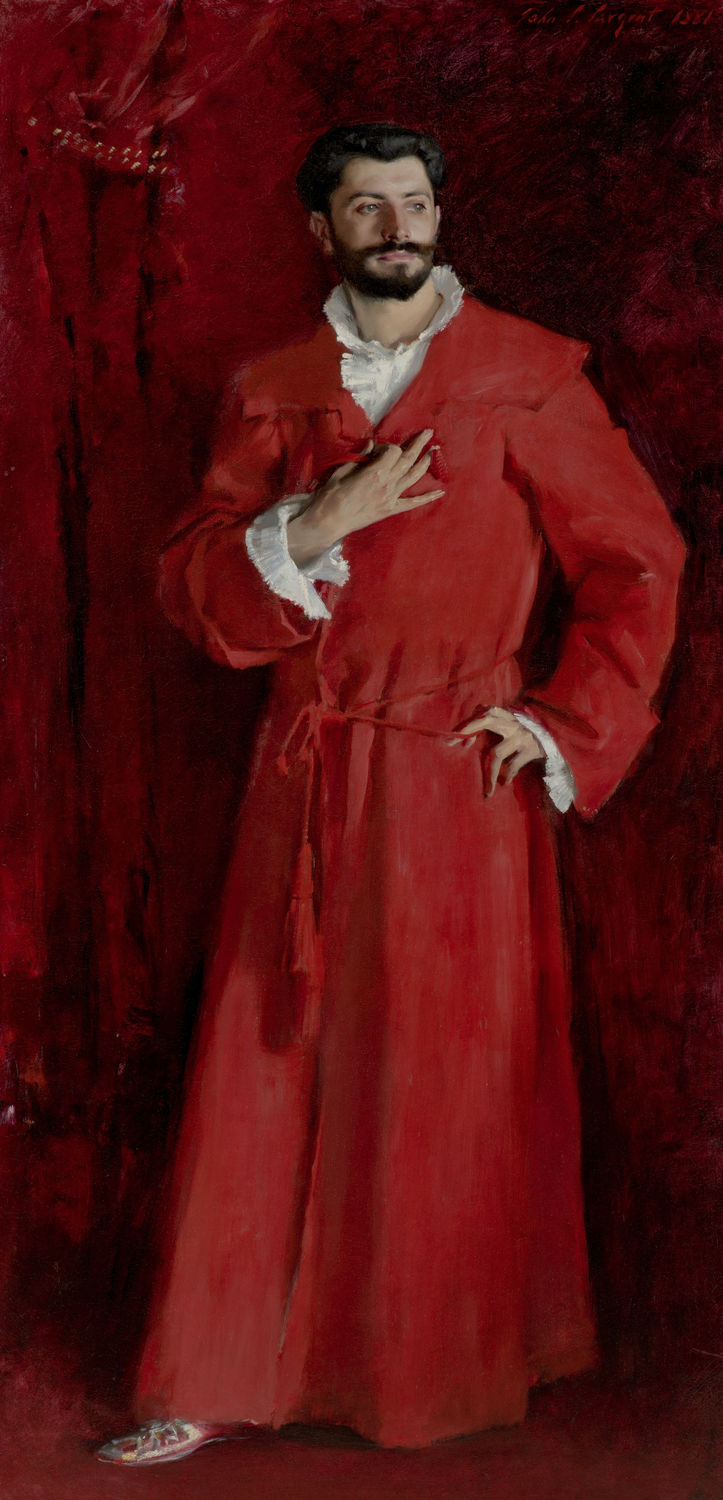
Art in Conversation: Catherine Opie and John Singer Sargent
This past week during our Art in Conversation tour, a 30-minute discussion about connections and comparisons between two works of art, my fellow student educator DJ and I chose to look closely at two pieces that are separated by more than one hundred years. I find Art in Conversation to be most engaging when the two works are not only from different exhibitions, but also seemingly unrelated. It then falls to us as student educators to unite the pieces under a common theme.
The theme for our tour was “Intimacy,” and DJ and I chose to start by looking at Catherine Opie’s Kate & Laura, 2012. Opie is one of the preeminent photographers of her generation; her exhibition at the Hammer is a collection of 12 portraits that engage directly with Renaissance portraiture, one of Opie’s major influences. While nearly all of Opie’s portraits could be described as “intimate,” Kate & Laura stands out in the exhibition, as it is the only piece that depicts more than one person. In it, a woman dressed in black sits while sewing. Next to her, another woman in white kneels and whispers into her ear. One visitor was quick to point out how the piece seemed to be removed from time and space—that had it not been such a detailed photograph, the image could have just as easily been from 1912 as from 2012.

When asked to examine the piece through the lens of “intimacy,” visitors began to take note of the posture of the women. The act of whispering into another person’s ear is a rather intimate action—one that would not be expected if these women were complete strangers. Further, the very action of whispering implies that, while these women are the only figures in the photograph, they are attempting to keep a secret; the question then becomes: from whom? One visitor noted that when one whispers a secret into someone’s ear they place their hand between their mouth and the person whom they wish to keep the secret from. In this case, the woman in white’s hand is placed between her mouth and the mysterious black background of the painting. In many ways, this subtle act of whispering alludes to a larger scene than what is shown in the photograph. Who is the secret being kept from? Is there another person in the scene? There is a common theater technique in which a spotlight is shown on a particular character or set of characters on stage so that it immediately isolates them allowing them a moment removed from the rest of the characters on stage. The only people privy to that scene is the audience. Similarly in Kate & Laura, the beholder is privy to the secret shared between the two women, indicating that they are either alienating the viewer by not acknowledging the presence of the beholder, or allowing the beholder into their intimate moment. The photograph not only depicts an intimate moment between two women, but actually absorbs the viewer into the intimacy as well.

The second piece DJ and I chose was John Signer Sargent’s Dr. Pozzi at Home (1881). An always popular piece in the Armand Hammer Collection, Dr. Pozzi is depicted in a luxurious red robe. Dr. Samuel Pozzi revolutionized 19th century gynecology by pioneering a method of physical examination that then became standard. It is rather easy to see how one might equate Sargent’s portrait of Pozzi with the notion of intimacy. Pozzi’s vibrant red robe is clearly casual attire, and the red background suggests that through the eye of Sargent, the viewer has entered into a private area of Pozzi’s home. The portrait alludes to a certain level of comfort and openness with physical intimacy, and given Pozzi’s reputation for extramarital romances, it is not entirely surprising. Though married to Therese Loth-Cazalis, Pozzi had notable affairs with opera singer Georgette Leblanc and actress Sarah Bernhardt (whose portrait is also on view in the Armand Hammer Collection gallery).
One visitor noticed the depiction of Pozzi’s hands during our conversation. The manner in which Sargent painted Pozzi’s hands has long been a matter of discussion, as well as Sargent himself. A gay man, Sargent’s sexual reputation very much mirrored that of his subject. The painter Jacques Émile Blanché, a contemporary of Sargent, once stated that the artist’s sex life “was notorious in Paris, and in Venice, positively scandalous.” Knowing a bit more about Sargent, visitors began to dissect the portrayal of Pozzi’s hands, noting that the left hand seems to be tugging on the rope, implying that the robe could easily be undone. There is a certain intimately seductive quality to this representation. Visitors felt that the garment was only loosely thrown on and that neither Pozzi nor Sargent felt a particular attachment to it. Dr. Pozzi at Home is a portrait of a man who is clearly comfortable with others being given an intimate look into his private life.
When DJ and I asked our group about the relationship between Opie’s and Sargent’s pieces one visitor noted how they both seemed very obviously intimate but in different ways. Another visitor commented that while Kate & Laura seemed to express a platonic form of intimacy, Dr. Pozzi at Home exhibited a much more charged and sensual form of intimacy. Ultimately, it was the group who pointed out how each work managed to draw in the beholder and made them feel as though they had an intimate connection with the subject matter.





